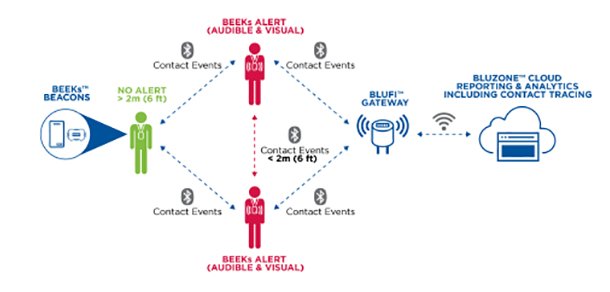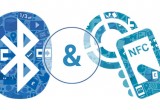HID launches employee IDs for social distancing in the workplace
Fobs and geo-fencing work to keep employees far enough away from each other to reduce pandemic risk
03 August, 2020
category: Corporate, Digital ID
Staying safe in a pandemic can be a confusing concept that is hard to achieve, especially for workers, but HID Global is using employee IDs for social distancing to help people stay apart — and healthy.
The system can be setup within hours, and that the technology uses existing enterprise networks or Bluetooth over Wi-Fi network connectivity and cloud services without the need for new infrastructure, hardware or network wiring
HID says that it has made “landmark additions” to its Location Services Internet of Things ecosystem to prevent workplace exposure to the coronavirus. Sure, many people are still working from home, but not all. As well, some economies are reopening and the pandemic danger promises to remain high for the foreseeable future.
To lesson such risk, the new HID Location Services for Workplace Safety physical distancing application alerts employees when they are closer than six feet to each other for a specified period of time. The application uses Bluetooth Low Energy (BLE) HID BEEKS Aware fobs to send those alerts.
The social distancing application can be used with the same fobs, badges and badge holders and are “easily added to existing ID cards, providing a full digital trail of an employee’s whereabouts and historical interactions while at work,” HID says. “This makes it possible to rapidly respond to cases and activate isolation procedures as needed.”
How can we use employee IDs for social distancing?
Here is how it works: Employers determine distancing policies for the workplace, and set zones via geo-fencing. Such zones can include break rooms, hallways, lobbies and other high-traffic areas where social distancing is not only pragmatic, but often required by state, local or corporate authorities.
The fobs are issued to employees, visitors and contractors. The fobs, using peer-to-peer capabilities, will flash and sound “a brief audible alert” when people are within six feet of each other for more than two minutes (or within other parameters set by the employer). The technology allows for contact tracing “using historical data on movement and interactions in order to trigger safety protocols,” HID says. “For standalone contact tracing, employers can couple the functionality with existing employee ID badges.”
The company says its new employee ID for social distancing technology has been tested and adopted by “major healthcare institutions and enterprise organizations worldwide, including at HID’s North American headquarters and manufacturing facility in Austin, Texas.” The company also said that it can set up this system within hours, and that the technology uses existing enterprise networks or Bluetooth over Wi-Fi network connectivity and cloud services without the need for new infrastructure, hardware or network wiring.
“Digitally managing social distancing is critical to encouraging the necessary behavioral shifts that will create a safer and more secure environment to which employees feel comfortable returning to work,” said Mark Robinton, vice president of IoT Services, Identification Technologies with HID Global. “Our goal with HID Location Services for Workplace Safety is to use our established IoT ecosystem to help organizations restore productivity with confidence by making it easier for everyone to adjust to workplace physical distancing and taking the manual leg-work out of contact tracing.”




